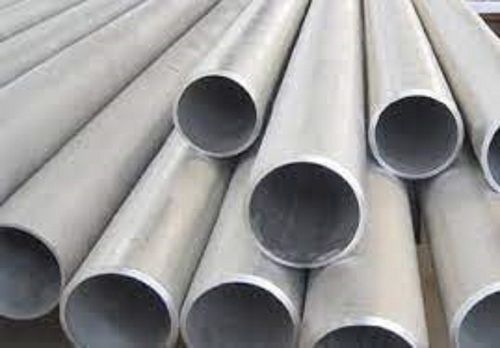ASTM A312-ASME SA 312 Seamless Pipe
Product Details:
- Application Construction Hydraulic Pipe Oil Pipe Fluid Pipe Gas Pipe
- Alloy Non-Alloy
- Product Type Stainless Steel Spiral Pipes
- Material Stainless Steel
- Steel Grade 304/304L and 316/316L.
- Type Seamless
- Shape Round
- Click to View more
ASTM A312-ASME SA 312 Seamless Pipe Price And Quantity
- 350 INR/Kilograms
- 2000 Kilograms
ASTM A312-ASME SA 312 Seamless Pipe Product Specifications
- 10 - 12 Meter Meter (m)
- 304/304L and 316/316L.
- Stainless Steel Spiral Pipes
- ASTM
- Round
- Seamless
- 0.1 - 60 mm Millimeter (mm)
- 304/304L and 316/316L.
- Construction Hydraulic Pipe Oil Pipe Fluid Pipe Gas Pipe
- 1/8 inch to 30 inch Inch (in)
- Non-Alloy
- Stainless Steel
- 12.5 Millimeter (mm)
ASTM A312-ASME SA 312 Seamless Pipe Trade Information
- 7 Days
- Yes
- Sample costs shipping and taxes has to be paid by the buyer
- Wooden crates or pallets for protection during transportation. Plastic or steel caps on the ends to prevent damage. Plastic or steel bands to secure the pipes in bundles. Labeling with important information such as size, material grade, and quantity. Shipping documentation including packing lists, invoices, and certifications.
- All India
- ASTM A312/ASME SA 312: This standard itself is a certification indicating compliance with the specified requirements for seamless pipes. Material Certifications: These certifications specify the composition and mechanical properties of the materials used in the pipes, often including chemical analysis and tensile test results. Pressure and Temperature Ratings: Certifications may include information on the pipes' pressure and temperature ratings, ensuring they can safely handle the intended operating conditions.
Product Description
-
Material: These standards primarily focus on austenitic stainless steel materials, such as grades 304, 304L, 316, and 316L, which are corrosion-resistant and suitable for sanitary applications. Other stainless steel grades may also be used if they meet the specified requirements.
-
Seamless Pipe: ASTM A270/ASME SA 270 specifies seamless stainless steel pipes for sanitary applications. Seamless pipes are preferred because they have smoother surfaces and fewer opportunities for contamination compared to welded pipes.
-
Size Range: The standard covers a range of sizes for seamless sanitary tubing, typically from 1/2 inch to 8 inches in outside diameter (OD), with various wall thickness options.
-
Surface Finish: The surface finish of the pipes is crucial for sanitary applications. ASTM A270/ASME SA 270 specifies various surface finishes, including mechanical and electropolished finishes, to meet the specific needs of different industries and applications. The choice of finish depends on factors like hygiene and cleanability requirements.
-
Tolerances: The standards define dimensional tolerances for OD, wall thickness, and length to ensure consistency and quality of the pipes.
-
Testing and Certification: ASTM A270/ASME SA 270 requires rigorous testing to ensure the quality of the pipes. Common tests include visual inspection, mechanical properties testing, non-destructive testing, and surface finish assessment. The pipes may also be subjected to additional tests, as specified by the purchaser.
-
Application: These seamless pipes are primarily used in industries where hygiene, cleanliness, and corrosion resistance are critical, such as food processing, dairy, pharmaceuticals, and biotechnology. They are suitable for conveying various fluids and gases in a sterile environment.
Our Metal For Your Solution
 |
METAL VISION
All Rights Reserved.(Terms of Use) Developed and Managed by Infocom Network Private Limited. |



